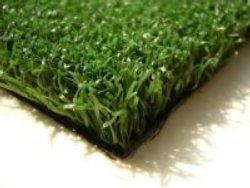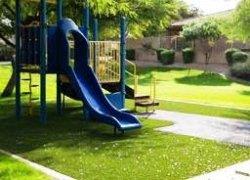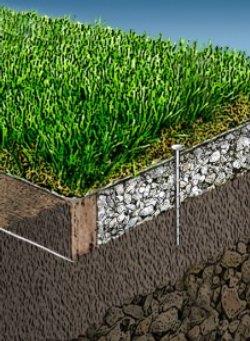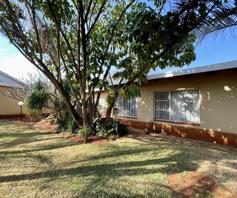
Imagine having the most green, lush and beautifully manicured lawn all year round without ever having to mow, weed or water it?
Synthetic grass looks as genuine as the real thing and it is the most wonderful invention for those who have no time or interest in garden maintenance. Think of the many hours and weekends you used to spend mowing, weeding and irrigating your lawn. Think too of the money you spent on water, mowers, garden services and lawn dressing. This can all be a thing of the past if you have synthetic lawn installed correctly.
Most synthetic grass is made from recycled materials such as polypropylene or polyethylene. It is very durable and if well installed, it can last for a very long time. Synthetic grass can be used in place of actual lawn and it can also be laid onto permanent flooring, such as patios and paving for example. It is also a great alternative for very shady areas, or high-traffic areas, such as under jungle gyms for example.
How to lay your synthetic lawn
The installation of synthetic grass requires a high level of site preparation. If you cannot do it yourself, hire a professional to do it for you, as good preparation will be the answer to a beautiful and long-lasting lawn.

Preparation:
The topsoil needs to be removed from the area where you have chosen to lay the synthetic lawn. Topsoil is the looser layer of soil that lies on top of the harder substrate of your lawn. If you are unsure of the depth, it is advisable to dig about fifteen to twenty centimetres down. Artificial lawn does not absorb water, and you need excellent drainage so that the rain water can drain away from the synthetic lawn after heavy rains. Make a mixture that you will lay in place of the topsoil, on top of the substrate, by mixing equal parts river sand and crushed stone. Mix it well before you lay it and make sure that the substrate has been cleared of all roots and any signs of growth.

Once this is done, spray the entire area with poison to prevent anything from growing in the area. Make sure not to spray before a storm, as this can wash the poison into the beds and kill off flowers and shrubs. Now it is time to use a compactor, which you can hire from a tool hire shop, and compact the entire area well. Evenly spread the sand and stone mixture throughout the area, ensuring that the middle of the lawn is slightly raised so the water can run off the lawn. The lawn ought to be shaped as a very gentle hill. Once the area is nicely levelled, use the compactor again to compact the stone and sand mix.
Border:
To ensure your lawn has the best chance of looking beautiful for a long time, create a strong border around it.
The best option would comprise a concrete border to prevent the flower beds from messing the lawn or getting waterlogged and softening the edges.
This would lead to swamp-like conditions, which would eventually destroy the level of the lawn. Insert a small pipe into the border every fifty centimetres – these will act as a drain for the water collected beneath the lawn, and it will help the area to drain quickly, resulting in very little chance of flooding.

Laying the lawn:
Lay the synthetic turf over the compacted drainage filler. Place the rolls tightly next to each other so that you cannot see the seams. Once it is all laid, use a broom to smooth the lawn out. All you have to do now is to secure the newly laid grass carpet down – using stainless steel grass pins, nail the grass down into the ground by hammering a pin into it in fifty-centimetres increments.
If the preparation is correctly completed and the lawn laid as it should be, you will have the most beautiful lawn in your garden for years to come. Artificial grass is not cheap, but once installed you can enjoy years of maintenance-free lawn that will save you a lot of money in the long run. – Antonella Desi
Readers' Comments Have a comment about this article? Email us now.
Yes, it does look good but it takes oil to make it, it doesn't photosynthesise and therefore does not contribute to a 'greener' planet! - Hilton









